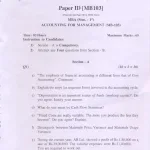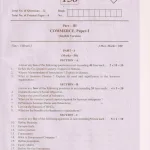Eco 02 focuses on economics concepts, theories, and practical applications. This guide provides comprehensive questions and answers to help understand key economic principles, calculations, and analysis. Designed for students, it ensures clarity and coverage of essential topics for thorough preparation.
Microeconomics Questions and Answers
Question: What is the law of demand?
Answer: The law of demand states that, all else being equal, the quantity demanded of a good decreases as the price of the good increases, and vice versa.
Question: What is the difference between a normal good and an inferior good?
Answer: A normal good experiences an increase in demand as consumer income rises, while demand for an inferior good decreases as consumer income rises.
Question: Define elasticity of demand.
Answer: Elasticity of demand measures the responsiveness of the quantity demanded of a good to a change in its price.
Question: What is the concept of opportunity cost?
Answer: Opportunity cost refers to the value of the next best alternative forgone when making a decision.
Question: Explain marginal utility.
Answer: Marginal utility is the additional satisfaction or benefit derived from consuming one more unit of a good or service.
Question: What is perfect competition?
Answer: Perfect competition is a market structure where many firms sell identical products, and no single firm can influence market price.
Question: What is a production possibility curve?
Answer: A production possibility curve shows the maximum combinations of two goods or services that can be produced with available resources and technology.
Question: Define consumer surplus.
Answer: Consumer surplus is the difference between the maximum price a consumer is willing to pay for a good and the actual price paid.
Question: What is price ceiling?
Answer: Price ceiling is a government-imposed limit on the price charged for a product, set below the equilibrium price.
Question: Explain the concept of market equilibrium.
Answer: Market equilibrium occurs when the quantity demanded equals the quantity supplied at a specific price.
Question: What is the significance of marginal cost?
Answer: Marginal cost represents the additional cost incurred from producing one more unit of a good.
Question: Define economies of scale.
Answer: Economies of scale occur when increased production lowers the per-unit cost of goods or services.
Question: What is monopolistic competition?
Answer: Monopolistic competition is a market structure with many firms selling differentiated products and some control over pricing.
Question: Explain the concept of externalities.
Answer: Externalities are costs or benefits of economic activities experienced by third parties not directly involved in the transaction.
Question: What is the role of government in correcting market failure?
Answer: Governments correct market failure through policies like taxation, subsidies, regulation, and public goods provision.
Question: What is utility maximization?
Answer: Utility maximization is the process by which consumers allocate their income to achieve the highest level of satisfaction.
Question: What is the difference between fixed cost and variable cost?
Answer: Fixed costs do not change with production levels, while variable costs vary with output.
Question: What is the significance of indifference curves?
Answer: Indifference curves represent combinations of goods providing equal utility to a consumer.
Question: Define the concept of demand forecasting.
Answer: Demand forecasting estimates future demand for a product based on past data, trends, and market conditions.
Macroeconomics Questions and Answers
Question: What is GDP?
Answer: GDP, or Gross Domestic Product, is the total monetary value of all final goods and services produced within a country in a specific period.
Question: Differentiate between nominal and real GDP.
Answer: Nominal GDP is measured at current market prices, while real GDP adjusts for inflation to reflect the true value of goods and services.
Question: What is fiscal policy?
Answer: Fiscal policy refers to government actions involving taxation and spending to influence the economy.
Question: Define monetary policy.
Answer: Monetary policy is the process by which a central bank manages the money supply and interest rates to control inflation and stabilize the economy.
Question: What is inflation?
Answer: Inflation is the rate at which the general price level of goods and services rises over time.
Question: What are the causes of unemployment?
Answer: Causes include structural, cyclical, frictional, and seasonal factors, as well as changes in technology or demand.
Question: Explain the balance of payments.
Answer: The balance of payments is a record of all economic transactions between a country and the rest of the world over a specific period.
Question: What is the multiplier effect?
Answer: The multiplier effect refers to how an initial change in spending leads to a larger overall impact on economic output.
Question: Define aggregate demand.
Answer: Aggregate demand is the total demand for all goods and services in an economy at a given price level and time.
Question: What is the Phillips curve?
Answer: The Phillips curve shows the inverse relationship between inflation and unemployment in the short run.
Question: What is the difference between a budget deficit and a budget surplus?
Answer: A budget deficit occurs when government spending exceeds revenue, while a surplus happens when revenue exceeds spending.
Question: Explain the concept of national income.
Answer: National income is the total income earned by a nation’s residents and businesses, including wages, profits, and rents.
Question: What are open market operations?
Answer: Open market operations are the buying and selling of government securities by a central bank to regulate the money supply.
Question: What is the role of the IMF?
Answer: The IMF provides financial assistance and advice to member countries to promote economic stability and growth.
Question: Define the term recession.
Answer: A recession is a period of negative economic growth lasting at least two consecutive quarters.
Question: What is economic growth?
Answer: Economic growth is the increase in a country’s production of goods and services over time.
Question: What is stagflation?
Answer: Stagflation is a situation where high inflation occurs alongside stagnant economic growth and high unemployment.
Question: What are the functions of money?
Answer: Money serves as a medium of exchange, store of value, unit of account, and standard of deferred payment.
Question: What is quantitative easing?
Answer: Quantitative easing is a monetary policy where central banks purchase assets to inject liquidity into the economy.
Public Finance Questions and Answers
Question: What is public finance?
Answer: Public finance studies how governments raise revenue, allocate resources, and manage expenditures.
Question: Define progressive taxation.
Answer: Progressive taxation imposes higher tax rates on individuals with higher incomes.
Question: What is the difference between direct and indirect taxes?
Answer: Direct taxes are paid directly to the government (e.g., income tax), while indirect taxes are levied on goods and services (e.g., sales tax).
Question: What are public goods?
Answer: Public goods are non-excludable and non-rivalrous, meaning their consumption by one person does not reduce their availability to others.
Question: What is deficit financing?
Answer: Deficit financing involves borrowing to cover a budget deficit, often through issuing bonds.
Question: Define the term tax evasion.
Answer: Tax evasion is the illegal act of not paying taxes owed by underreporting income or inflating deductions.
Question: What is a subsidy?
Answer: A subsidy is financial assistance provided by the government to encourage or support specific economic activities.
Question: What is fiscal deficit?
Answer: A fiscal deficit occurs when a government’s total expenditure exceeds its total revenue, excluding borrowings.
Question: Define debt sustainability.
Answer: Debt sustainability refers to a government’s ability to manage its debt without external assistance or default.
Question: What are transfer payments?
Answer: Transfer payments are payments made by the government without receiving goods or services in return, like pensions and unemployment benefits.
Question: What is the principle of maximum social advantage?
Answer: This principle states that government spending and taxation should be balanced to maximize public welfare.
Question: What is tax elasticity?
Answer: Tax elasticity measures how tax revenue changes in response to changes in income or tax rates.
Question: What are non-tax revenues?
Answer: Non-tax revenues are income sources for the government other than taxes, such as fees, fines, and profits from public enterprises.
Question: What is public debt?
Answer: Public debt is the total amount of money that a government owes to creditors.
Question: What is zero-based budgeting?
Answer: Zero-based budgeting requires justifying all expenses for each new period, starting from a “zero base.”
Question: Explain the Laffer curve.
Answer: The Laffer curve illustrates the relationship between tax rates and tax revenue, showing that higher rates may reduce revenue.
Question: What is capital expenditure?
Answer: Capital expenditure refers to funds spent by the government on long-term assets like infrastructure and development projects.
Question: Define fiscal decentralization.
Answer: Fiscal decentralization is the process of transferring financial decision-making powers from central to local governments.
Question: What is the difference between revenue and capital receipts?
Answer: Revenue receipts are short-term, like taxes and fees, while capital receipts involve long-term sources, like loans and asset sales.
This guide helps students strengthen their understanding of key economic topics through detailed questions and answers. Comprehensive preparation fosters confidence and clarity in tackling exams effectively.
Latest Posts
- Step-by-step guide to download and apply for jee mains admit card 202
- Comprehensive 2025 government holidays and recruitment details for job seekers
- JEE Mains Admit Card 2025: Your Step-by-Step Guide to Downloading the Hall Ticket
- Everything You Need to Know About 2025 Government Holidays Recruitment
- Comprehensive Guide to rrb d group recruitment 2025 – Eligibility, Vacancies, and Application
- Detailed guide to nps trust recruitment 2025 vacancies, eligibility and apply process
- Comprehensive guide to hpcl recruitment 2025 notification, vacancies, and application process
- ignou bed admission 2025 complete recruitment guide with eligibility and process
- Comprehensive Guide to Indian Army Agniveer Recruitment 2025 Notification and Jobs
- Everything You Must Know About CBSE Board Exams 2025 Changes & New Rules






